Look, there’s a reason romance novels are flying off the shelves (and topping e-reader downloads). According to Literature & Latte, romance is the “highest-grossing fiction genre in the world,” with 82% of readers being women who are craving stories that actually feel real. We’re all secretly wanting those butterflies-in-your-stomach moments, even if we won’t admit it out loud.
I’ll never forget finding my first romance novel tucked away in my grandmother’s bookshelf—this totally worn-out copy that had obviously been read a million times. That moment? It made me realize why these stories grab us by the heart and don’t let go. They give us hope. They remind us that love can be messy and complicated and still work out. Whether you’re looking for inspiration for your own writing or just want to dive into some seriously good love stories, I’ve got 25 incredible books that’ll restore your faith in romance.
Table of Contents
-
What Makes a Love Story Actually Hit Different These Days
-
Classic Romance Gets a Modern Makeover
-
Real-Life Love Stories That’ll Wreck You
-
Love in the Age of Instagram and Dating Apps
-
Finally – Stories That Represent All of Us
-
Love That Breaks All the Rules
-
When Love Helps You Heal
-
How These Stories Stack Up (The Real Talk)
-
Turn Your Love Story Ideas Into Actual Books
TL;DR
-
The best love stories today feel real AF – they deal with actual problems like anxiety, student loans, and figuring out who you are
-
We’re finally getting diverse stories that represent everyone – LGBTQ+, disabled characters, different cultures, and all kinds of relationship styles
-
Modern romance tackles how dating apps and social media mess with our heads (spoiler: it’s complicated)
-
These aren’t your mom’s romance novels – they deal with real stuff like PTSD, caring for aging parents, and dating after divorce
-
Stories about polyamory, asexual relationships, and age gaps are becoming mainstream (and it’s about time)
-
The healing power of love is real, but these stories show it’s not about “fixing” someone
-
You can actually use AI tools to help write your own romance novel (and no, it won’t write it for you)
What Makes a Love Story Actually Hit Different These Days
Here’s the thing – the best love stories today make you think “OMG, this could totally happen to me” while still giving you those classic swoon-worthy moments. We don’t want perfect people anymore. We want characters who have anxiety, who overthink texts, who have complicated family situations, and who still somehow find their person.
Gone are the days when romance was just about misunderstandings that could’ve been solved with one honest conversation. We want characters who actually talk to each other! Wild concept, right?
You know what really gets us? Stories that feel genuine instead of like they came from a romance novel template. We want people who struggle with real problems – like trying to afford rent while following their dreams, dealing with mental health stuff, or navigating family drama. The days of impossibly perfect protagonists meeting under ridiculously convenient circumstances? Yeah, we’re over that.
Understanding what makes stories actually work starts with looking at story theme examples that hit us right in the feels – especially those universal themes about connection and figuring yourself out.
Here’s what’s changed about romance:
Old School Romance: Perfect people, external drama, limited representation, miscommunication central, fairy tale endings
Romance That Actually Works: Flawed but loveable characters, real-world problems plus internal growth, everyone gets to see themselves, people who actually communicate, endings that feel earned
Emotional intimacy is everything in the best love stories. I’m talking about vulnerability, personal growth, and the messy reality of building something real with another person. Characters need to actually evolve – they should learn about themselves just as much as they figure out their feelings for their partner.
And can we talk about diversity? It’s not optional anymore. We want to see ourselves in these stories, whether that’s through cultural background, sexual orientation, disability representation, or different relationship styles. Stories that authentically show different communities without falling back on tired stereotypes? Those are the ones that really connect.
The best love stories handle current social stuff while still being universal. They might explore how Instagram affects relationships, the challenges of long-distance love, or what it’s like dating in different generations. But here’s the key – they still need solid storytelling basics. Character growth, engaging plots, conflicts that actually matter, and emotional payoffs that feel satisfying.
Classic Romance Gets a Modern Makeover
These four stories take those romance plots we all secretly love and update them for people who live in the real world – dealing with things like sliding into DMs, corporate culture, Instagram authenticity, and emotional baggage while keeping all the swoon-worthy moments that make classics, well, classic.
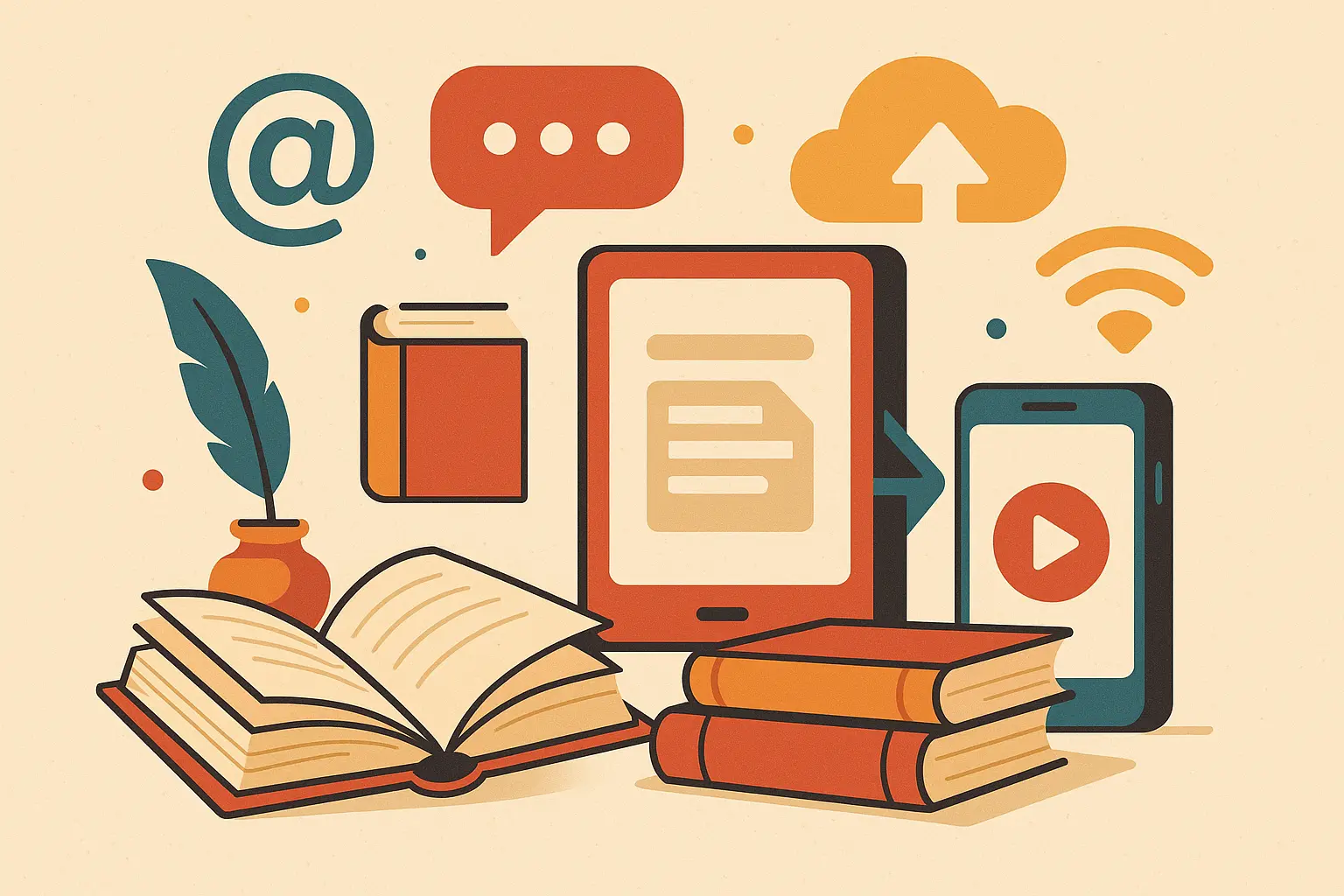
1. The Modern Pride and Prejudice
Picture this: She thinks he’s just another tech bro destroying her neighborhood with his startup money. He thinks she’s stuck in the past, running a dusty old bookstore that nobody visits anymore. Spoiler alert – they’re both completely wrong, and the sparks that fly aren’t just from their arguments.
Emma owns this gorgeous little bookstore that’s been in her family forever, and she’s watching her neighborhood get taken over by overpriced coffee shops and co-working spaces. Then David shows up – all expensive sneakers and talk about “disrupting” the book industry. She immediately writes him off as everything wrong with Silicon Valley culture.
But here’s where it gets good – turns out David’s actually developing apps for affordable housing and donating most of his profits to literacy programs. When Emma finds this out, her whole “tech bros are evil” worldview gets flipped upside down.
God, don’t we all judge too quickly? I mean, how many times have you written someone off completely only to find out they’re actually pretty amazing?
The digital-age stuff makes it even messier – text messages get misinterpreted, social media posts fuel misunderstandings, and don’t even get me started on the drama that happens when Emma accidentally likes one of David’s photos from three years ago at 2 AM.
2. Romeo and Juliet: Corporate Edition
Two rising executives from companies that absolutely hate each other meet at an industry conference. They have no idea their firms are in the middle of a hostile takeover battle. Cue the most complicated office romance ever.
As their relationship gets deeper, they’re stuck between climbing the corporate ladder and following their hearts. But unlike Shakespeare’s version (sorry, spoiler alert for a 400-year-old play), this one actually has hope. Sometimes love can bridge even the most cutthroat business rivalries.
3. Cinderella’s Digital Transformation
A struggling social media manager creates a fake online persona that catches the eye of a tech billionaire. What starts as innocent fake-it-till-you-make-it turns into serious identity crisis territory when real feelings get involved.
This story hits different because it’s basically every millennial’s dating nightmare – how much of what we show online is actually real? She’s curating this perfect life while eating ramen for dinner and sharing a studio apartment with two roommates. When genuine feelings develop, she has to decide: come clean and risk losing everything, or keep living the lie.
Class differences in the digital age get real complicated when your online presence can completely mask your actual circumstances. It’s like Cinderella, but instead of a fairy godmother, she’s got Facetune and really good lighting.
4. Beauty and the Beast: Healing Edition
A physical therapist helps a former athlete work through both the physical and emotional aftermath of a career-ending accident. But here’s the twist – they both grow and heal together instead of one person “fixing” the other.
This isn’t about some magical transformation. It’s about two real people dealing with trauma, self-worth issues, and figuring out that love isn’t about being someone’s savior. The professional boundaries add another layer of complexity because, let’s be real, falling for your healthcare provider is ethically complicated.
The story challenges all those tired narratives about disability and self-worth while showing how genuine human connection can be healing for everyone involved.
Real-Life Love Stories That’ll Wreck You
These five stories are based on stuff that actually happens to real people – military deployments, finding love later in life, pandemic isolation, being a caregiver, and struggling to build a family. They’re the kind of stories that make you think “I know someone going through this exact thing.”
5. The Long-Distance Love Letter
Based on true love stories that’ll make you ugly cry, this couple keeps their relationship alive through handwritten letters during a two-year military deployment. In a world of instant messaging, they rediscover what it means to really communicate.
Look, when’s the last time you wrote an actual letter? Not a text, not an email – a real letter with your handwriting and everything. These two are forced to slow down and really think about what they want to say to each other.
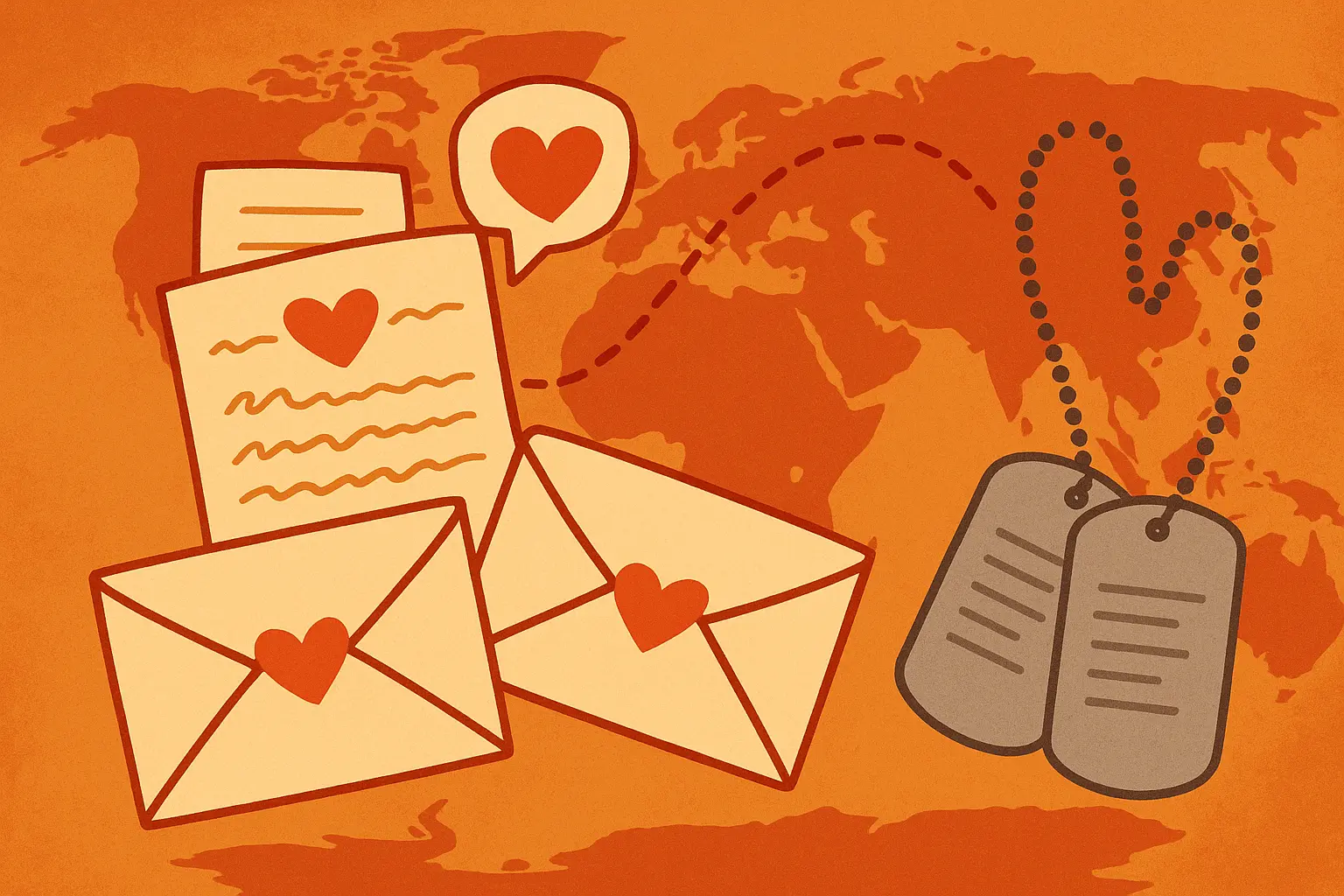
The military deployment stuff is real – dealing with different time zones, missed calls, and the constant worry. But there’s something beautiful about how physical distance actually brings them closer emotionally. Their families and friends become lifelines, and you really see how community support can make or break a long-distance relationship.
Coming home isn’t automatic happiness either – there’s this whole readjustment period that nobody talks about. It’s messy and real and shows that even the most romantic love stories require work from both people.
6. Second Chances at Sixty
A widow and widower meet in a grief support group and slowly build something new while honoring their past relationships. This one destroys every stereotype about love being just for young people.
Both of them have decades of marriage experience, which means they know what works and what doesn’t. But they also have adult children who have opinions, financial stuff to figure out, and their own fears about being vulnerable again after loss.
The story shows how love at any age is valid and beautiful, while being real about the unique challenges that come with finding someone later in life. Estate planning as foreplay, anyone? Blended family holiday negotiations? These are the real conversations that happen when you fall in love after 50.
7. The Pandemic Romance
Two neighbors who had literally never spoken become friends through balcony conversations during lockdown, then fall in love before they ever touch. Social distancing as a romantic obstacle? It’s weird how constraints can actually make stories more creative.
This story shows how writers can use limitations to spark creativity, similar to how story starters can help overcome creative blocks and develop compelling romantic narratives.
They share meals eaten on separate balconies, have Netflix watch parties over video chat, and find ways to be intimate without physical contact. It’s actually beautiful how genuine connection can develop when you remove all the physical stuff and focus on really getting to know someone.
Building relationships during isolation highlights how important emotional compatibility really is when you can’t rely on immediate chemistry or physical attraction.
8. The Caregiver’s Heart
A home health aide and her patient’s adult son navigate falling in love while dealing with Alzheimer’s disease in the family. The professional boundaries make it ethically complicated, but the emotional connection is undeniable.
This one hits hard because caregiving is exhausting and heartbreaking, but it also shows people at their most compassionate. Their relationship develops slowly through shared purpose and mutual respect – they see each other handling impossible situations with grace.
The story handles the ethical stuff realistically without making it the main drama. Instead, it focuses on how caring for someone with dementia affects everyone involved and how genuine support can grow into love.
9. The Adoption Journey
A couple’s relationship gets tested and ultimately strengthened through years of fertility struggles and the adoption process. This shows how love persists through some of life’s biggest challenges.
When Sarah and Marcus face their third failed IVF attempt, their relationship almost breaks under the financial strain and emotional exhaustion. The turning point comes when they realize their dream of parenthood doesn’t require a biological connection.
Their journey through home studies, waiting periods, and finally welcoming their daughter becomes a love story that’s about more than just the couple – it’s about building a family in all its forms.
These real life love stories show how couples face actual obstacles – financial stress, medical procedures, legal processes, and emotional exhaustion – making their success feel earned rather than inevitable.
Love in the Age of Instagram and Dating Apps
These four stories tackle how technology shapes modern romance – from AI matching algorithms to Instagram influence culture. They explore both the amazing opportunities and the serious challenges that come with trying to find genuine connection in an increasingly digital world.
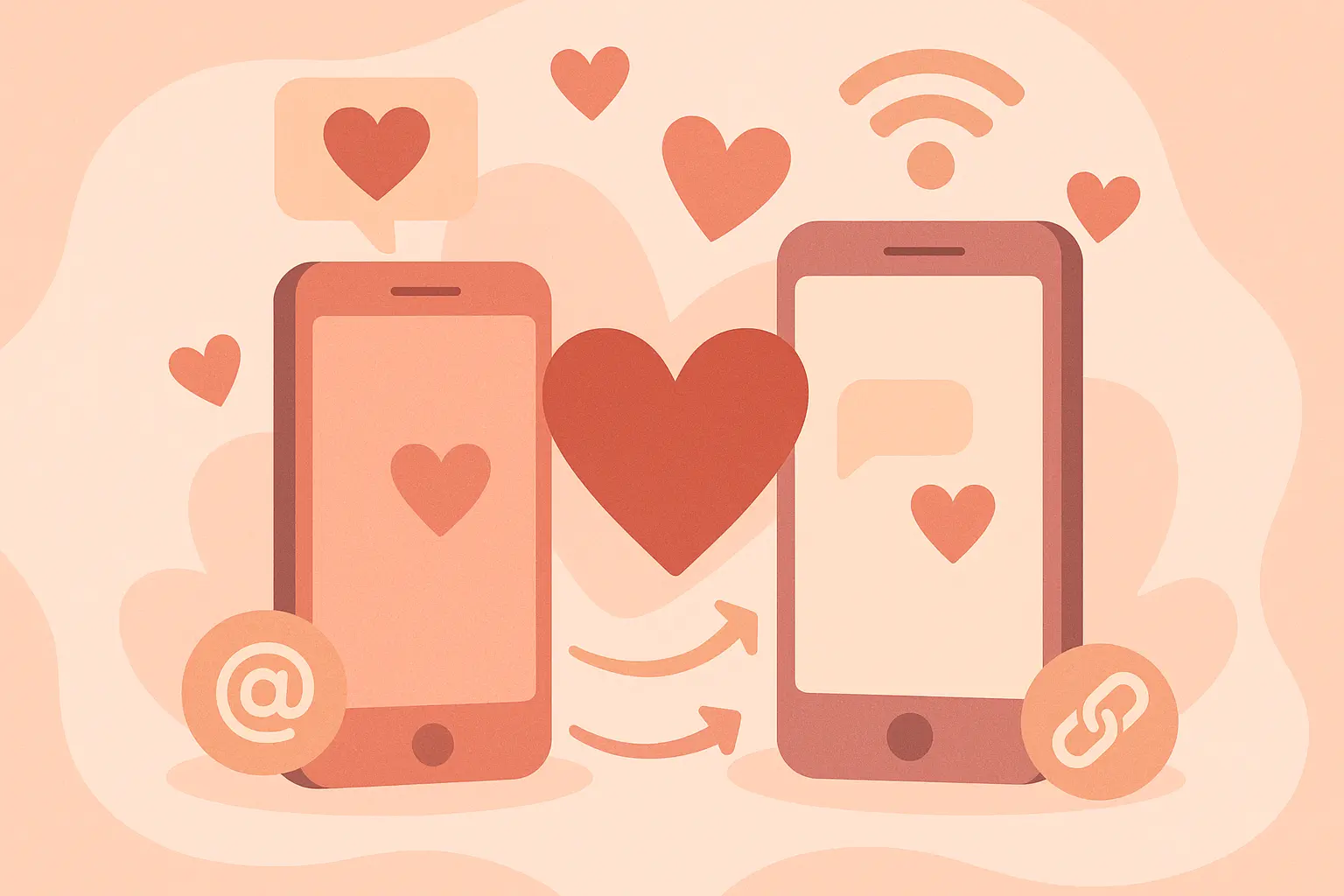
10. The Algorithm’s Match
A data scientist discovers she’s been unknowingly beta-testing her company’s new dating algorithm when she falls for another tester. Cue the existential crisis about whether their connection is real or engineered.
At first, she thinks their connection is totally organic – they just click, you know? Then she finds out sophisticated algorithms have been guiding their interactions the whole time. It’s like finding out your soulmate was actually chosen by a computer program.
The story digs into whether love can be genuine when it’s facilitated by AI. Like, does it matter how you meet someone if the feelings are real? It’s the kind of question that’ll keep you up at night thinking about your own dating app matches.
11. The Influencer’s Real Love
A lifestyle influencer who’s built her whole brand around her “perfect” relationship has to choose between maintaining her follower count and pursuing genuine love with someone who values privacy. It’s basically every influencer’s nightmare scenario.
Performing your relationship for thousands of followers turns out to be the opposite of intimacy. Who knew? Her potential partner wants nothing to do with being content, which challenges everything she’s built her career on.
The commercialization of romance becomes the main conflict – can you have authentic love when your relationship pays your bills? Social media’s impact on relationship authenticity creates this constant tension between what’s real and what gets engagement.
12. The Gaming Guild Romance
Two competitive gamers from different continents fall in love through shared virtual adventures, then meet in person after two years of online courtship. This story legitimizes online relationships and gaming culture as totally valid spaces for real connection.
They develop deep emotional intimacy through late-night gaming sessions, supporting each other through both virtual challenges and real-world struggles. The story
addresses all that skepticism people have about couples who meet online while showing how digital spaces can create genuine emotional bonds.
When they finally meet in person, it’s not the beginning of their relationship – it’s just a new chapter in an already established love story. Their connection was already real; now it’s just in 3D.
13. The Digital Detox Romance
Two people meet at a technology-free retreat and have to maintain their connection in the real world without all the digital tools they’ve become dependent on. It’s harder than you’d think when you can’t just text someone every random thought.
The retreat forces them to develop actual listening skills and emotional awareness without the safety net of being able to Google conversation topics or hide behind carefully crafted text messages.
When they return to real life, they have to consciously choose how much digital mediation they want in their relationship. It’s about finding balance between using technology as a tool versus letting it become a crutch.
Finally – Stories That Represent All of Us
These four stories center characters from communities that haven’t always been represented in mainstream romance – exploring how cultural identity, sexual orientation, disability, and late-life self-discovery shape romantic experiences. Each story provides authentic representation without falling into stereotype territory.
Different Types of Love Stories:
Cultural Stories: Focus on family expectations vs. modern values, consent and respect, navigating tradition
Identity Stories: Deal with bicultural balance, family dynamics, language barriers
LGBTQ+ Stories: Cover self-acceptance, coming out, identity formation
Disability Stories: Highlight accessibility, dignity, agency, genuine connection
14. The Arranged Love Evolution
A modern arranged marriage slowly transforms into genuine love as two professionals navigate cultural expectations while building a real partnership. This story respectfully explores arranged marriage without all the stereotypes.
Both characters approach their arrangement practically at first, but gradually discover emotional and physical attraction through shared experiences and mutual support. The key here is that it’s based on mutual consent and respect – nobody’s being forced into anything.
The story tackles cultural tensions and family expectations while showing how arranged marriages can actually be empowering when done right. It’s about balancing tradition with individual desires and modern relationship expectations.
15. The Second-Generation Love Story
Two children of immigrants navigate their bicultural identities while falling in love, dealing with family expectations and figuring out their own cultural authenticity. It’s about balancing traditional values with contemporary life while forming your own identity.
Language barriers and cultural translation become both obstacles and opportunities for deeper understanding as they learn to bridge different worlds. Intergenerational family dynamics create complexity as they honor their heritage while building their own path.
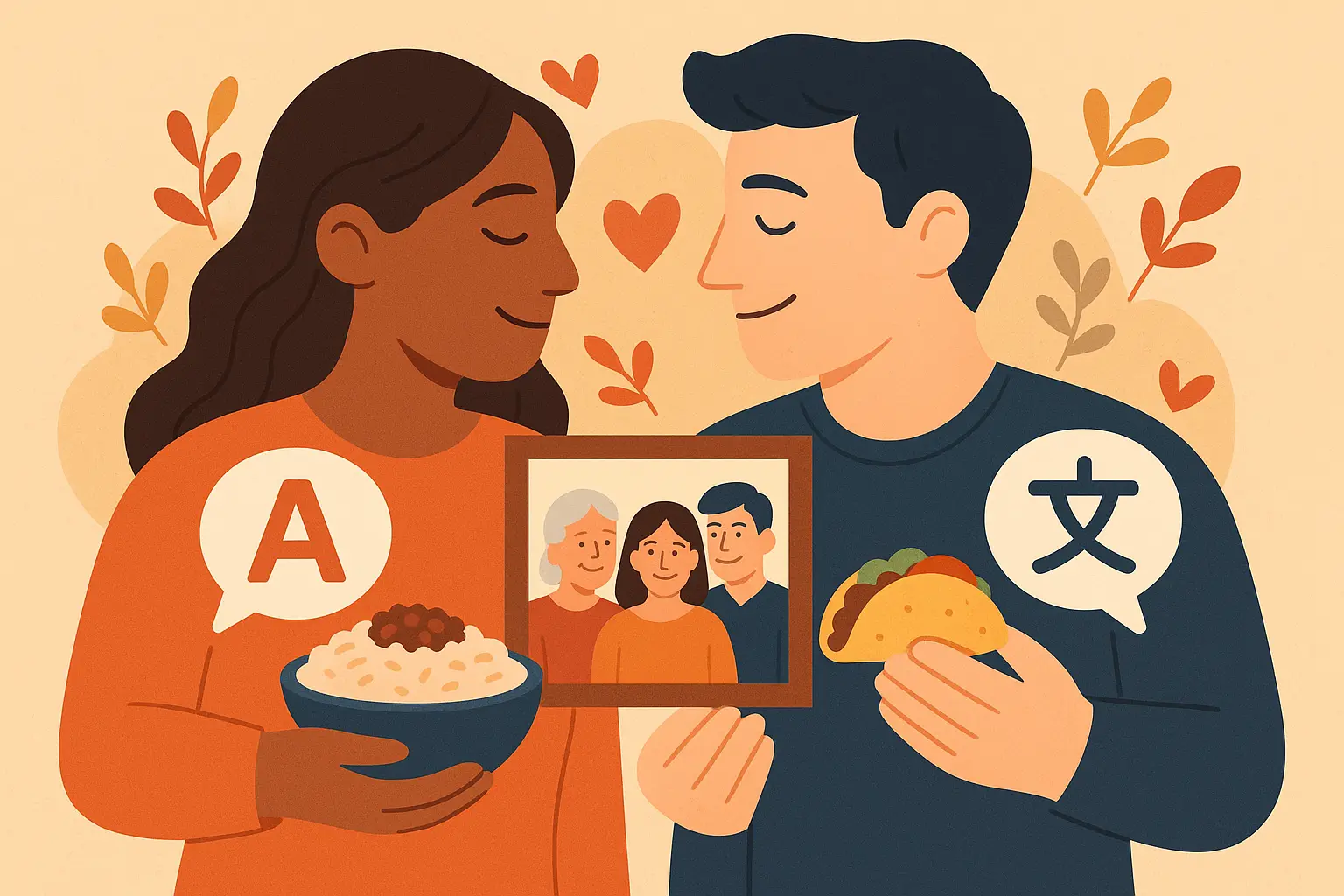
Identity formation in multicultural contexts becomes central to their relationship – showing how love can help people integrate different aspects of their cultural background into a cohesive sense of self.
16. The Late-Blooming Love
A 35-year-old woman discovers her sexuality when she falls in love with another woman, navigating coming out, family reactions, and authentic self-discovery. This story handles late-in-life sexual awakening with sensitivity and shows the courage it takes to live authentically.
She has to reconcile her new understanding of herself with existing relationships, career expectations, and family dynamics. It’s not just about romantic relationships – changing identity affects literally everything in your life.
Support systems become crucial as she learns to navigate coming out later in life. The story celebrates the joy of authentic self-discovery while being real about the challenges of major life transitions.
17. The Disability Love Story
A wheelchair user and an able-bodied person navigate societal assumptions and accessibility challenges while building a relationship based on genuine connection and mutual respect. This story challenges ableist assumptions about romance while providing authentic disability representation.
Practical accessibility considerations become part of their relationship development, but the focus stays on emotional compatibility and shared interests rather than making disability the central defining factor. It’s about dignity and agency – showing how genuine love develops through mutual respect rather than pity or those weird inspiration narratives.
Love That Breaks All the Rules
These four stories explore relationship structures that aren’t your typical monogamous partnerships – polyamory, friends-to-lovers, age gaps, and asexual romance. Each one approaches alternative relationship models with respect while examining the unique challenges and rewards they bring.
18. The Polyamorous Journey
A couple explores opening their relationship and discovers the complexities of ethical non-monogamy while actually strengthening their original bond. This story approaches polyamory thoughtfully – showing both challenges and rewards without making it seem like either a utopia or a disaster.
Clear communication, boundary setting, and ongoing agreements become essential as they navigate jealousy, time management, and social stigma. Ethical non-monogamy requires exceptional communication skills and emotional maturity – it’s definitely not the easy option some people think it is.
Instead of focusing on drama, the story shows the real work required to maintain multiple loving relationships while honoring everyone involved, including the personal growth that can come from examining your relationship assumptions.
19. The Friends-to-Lovers Marathon
Two best friends slowly realize their romantic feelings over a decade of friendship, showing how love can evolve gradually and the risk of changing established dynamics. The slow burn creates tension as both characters fear losing their existing relationship.

The comfort and challenge of deep familiarity becomes both an asset and obstacle as they navigate the transition from friendship to romance. Timing and missed opportunities create realistic relationship development over years.
Fear of losing their existing connection creates authentic internal conflict – is the potential for romantic love worth risking their established friendship and support system?
20. The Age Gap Romance
A 28-year-old graduate student and a 45-year-old professor (no longer in a student-teacher relationship) navigate societal judgment while building connection based on intellectual compatibility and emotional maturity. This story carefully addresses age gap relationships while avoiding problematic power dynamics.
Their connection develops through shared intellectual interests and compatible life goals after the academic relationship has ended. The story acknowledges societal skepticism while exploring how significant age differences can work between consenting adults.
Practical considerations like different life stages, family planning timelines, and social acceptance create realistic challenges while keeping the focus on emotional compatibility and mutual respect.
21. The Asexual Love Story
Two asexual individuals find love that prioritizes emotional intimacy, companionship, and romantic connection without sexual pressure or expectations. This story provides representation of asexual romantic relationships while exploring different forms of intimacy.
When Alex and Jordan meet at a book club, their connection develops through shared literary discussions and long walks. Their first “I love you” happens during a quiet evening of reading together on the couch – each absorbed in their own book but finding comfort in shared presence.
The story challenges societal assumptions about the relationship between love and sex, focusing instead on emotional compatibility, shared interests, and romantic affection without sexual components.
When Love Helps You Heal
These four stories focus on how romantic relationships can support personal healing and growth – addressing addiction recovery, trauma, divorce recovery, and self-love development. Each shows how healthy partnerships can facilitate individual healing while avoiding codependent dynamics.

22. The Addiction Recovery Romance
Two people meet in recovery and build a healthy relationship while maintaining individual sobriety and personal growth. This story addresses the complexities of dating in recovery, showing how partners can support each other’s healing without becoming codependent.
Writers exploring complex character development in recovery stories can benefit from examining character development techniques that create authentic emotional depth and personal transformation arcs.
Both characters have established sobriety and active recovery programs when they meet, so the relationship develops from individual stability rather than mutual dependence. Community support becomes crucial as they navigate the ongoing nature of recovery while building romantic connection.
The story shows healthy relationship dynamics while acknowledging that recovery is a lifelong process affecting all relationships.
23. The Trauma Healing Love
A veteran with PTSD and a therapist (who’s not his therapist) slowly build trust and intimacy while addressing trauma’s impact on relationships. This provides realistic portrayal of trauma’s effects on relationship capacity while maintaining appropriate professional boundaries.
Building trust after trauma requires patience and understanding from both partners as they navigate triggers, communication challenges, and the ongoing nature of healing. Professional boundaries ensure ethical relationship development.
The role of patience and understanding becomes central to their connection as both learn how trauma affects intimacy and develop strategies for building trust and emotional safety together.
24. The Divorced Parents’ Love
Two single parents meet through their kids’ activities and navigate co-parenting relationships, blended family dynamics, and their own fears about commitment after divorce. This explores finding love as a single parent while prioritizing children’s wellbeing.
Both carry concerns about how new relationships might affect their children, creating realistic obstacles as they balance romantic feelings with parental responsibilities. Custody schedules, ex-spouse relationships, and blended family considerations add complexity.
The story shows how love can develop gradually through shared parenting experiences and mutual support while maintaining individual parenting relationships.
25. The Self-Love Journey
A person’s journey to self-acceptance and self-love ultimately enables them to build healthy romantic relationships for the first time. This focuses on personal growth as the foundation for healthy relationships while breaking cycles of unhealthy patterns.
These love stories intimate in their exploration of personal transformation show how the connection between self-worth and relationship choices becomes central as the protagonist learns to recognize and change destructive patterns.
Therapy and personal development provide tools for building healthier connections. Breaking cycles of unhealthy relationship patterns requires ongoing self-awareness and commitment to personal growth.
How These Stories Stack Up (The Real Talk)
Let me break down how well each story performs across the stuff that actually matters – authenticity, emotional depth, diversity, contemporary relevance, and solid storytelling. I’ll tell you which ones are absolute winners and which ones could use some work.
Top Performers by Category:
Most Authentic: Pandemic Romance, Caregiver’s Heart – these feel like real experiences we’ve all lived through
Deepest Emotions: Second Chances at Sixty, Late-Blooming Love – major life transitions hit different
Best Diversity: Arranged Love Evolution, Disability Love Story – authentic representation without stereotypes
Most Current: Algorithm’s Match, Influencer’s Real Love – tackles how tech messes with relationships
Strongest Writing: Beauty and Beast: Healing, Gaming Guild Romance – solid character development with fresh twists
Stories like “The Pandemic Romance” and “The Caregiver’s Heart” excel because they’re grounded in stuff that millions of people actually experienced. These feel genuine because they reflect shared experiences we’ve all witnessed or lived through.
“Second Chances at Sixty” and “The Late-Blooming Love” provide serious emotional depth by exploring major life transitions and self-discovery. These create intimate connections between readers and characters through vulnerable, authentic emotional journeys.
The diversity evaluation shows strong representation across multiple categories. “The Arranged Love Evolution” and “The Disability Love Story” provide authentic portrayals of underrepresented communities without relying on tired stereotypes or tokenism.
Contemporary relevance peaks in stories addressing AI relationships, social media influence, and digital communication challenges. “The Algorithm’s Match” and “The Influencer’s Real Love” directly tackle current technological impacts on human connection.
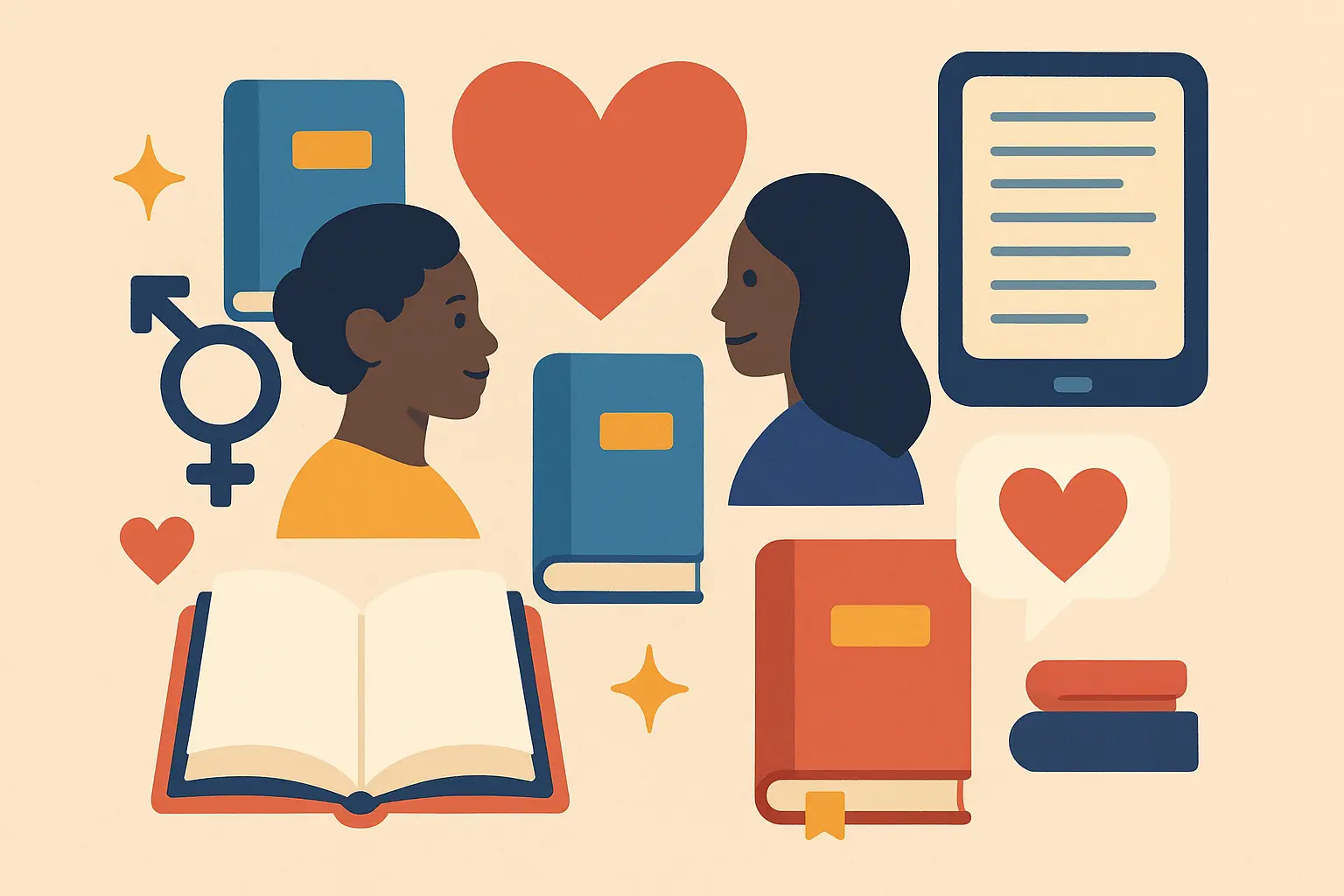
The strongest stories combine innovative premises with solid storytelling basics. “Beauty and the Beast: Healing Edition” shows excellent character development while “The Pandemic Romance” demonstrates creative plot construction using unique constraints.
Universal themes get fresh treatment through modern contexts – “The Gaming Guild Romance” presents timeless connection themes through contemporary gaming culture, while “The Digital Detox Romance” examines authentic communication by removing technological mediation.
These true love stories show that the most effective romantic narratives balance innovation with proven storytelling elements, creating love stories that feel both fresh and enduringly appealing.
Turn Your Love Story Ideas Into Actual Books
Okay, let’s talk about actually writing these stories. Nairrate’s AI-powered tools can help you overcome creative blocks and develop compelling romantic narratives – providing story starters, character development help, and support for diverse representation. The platform streamlines everything from initial concept to completed story while keeping your unique voice.
Creating compelling love stories often starts with the most challenging obstacle – that terrifying blank page. Nairrate’s Story Starters Generator provides compelling opening lines specifically for romance narratives, whether you’re developing slow-burn contemporary romance or intense passion-driven stories.
Writers can overcome creative blocks by using story idea generators to spark inspiration for unique romantic scenarios and character dynamics that feel fresh yet emotionally authentic.
Character development becomes way easier with AI assistance that creates multi-dimensional characters with authentic backgrounds, motivations, and emotional depth. When you’re crafting complex stories involving ethical situations or professional boundaries, Nairrate helps develop characters whose choices feel both realistic and emotionally satisfying.
For writers specifically interested in romantic narratives, Nairrate’s love story generator provides targeted assistance for developing compelling romantic plots, character chemistry, and emotionally satisfying relationship arcs.
Genre-specific romance expertise ensures your story follows appropriate conventions while offering fresh perspectives. Whether you’re writing contemporary romance, second-chance love stories, enemies-to-lovers narratives, or friends-to-lovers tales, the AI provides pacing and conflict development techniques that resonate with romance readers.
Authentic dialogue and intimate moments require careful balance between emotional authenticity and reader engagement. Nairrate helps create conversations that feel natural while advancing both plot and character development.
Supporting diverse representation across cultures, orientations, and backgrounds requires sensitivity and research. Nairrate assists in developing respectful representation while avoiding stereotypes, ensuring characters’ identities feel integral to their stories rather than tokenistic additions.
Love stories and their development through AI assistance show how technology can enhance rather than replace human creativity, providing writers with tools to explore authentic emotional connections while maintaining their unique voice and perspective.

Ready to create your own unforgettable love story? Nairrate’s AI-powered tools provide the perfect blend of creative inspiration and practical support, helping you craft authentic romance narratives that resonate with modern readers while honoring timeless elements that make love stories compelling across generations.
Final Thoughts
These 25 love stories represent how romance literature has evolved – moving beyond cookie-cutter formulas to embrace the complexity an
d diversity of modern relationships. Each story offers something unique, whether it’s exploring how technology shapes connection, celebrating underrepresented communities, or examining how love can facilitate healing and personal growth.
The strongest stories combine authentic emotional experiences with contemporary relevance, creating narratives that feel both timeless and urgently current. They acknowledge that love doesn’t exist in a vacuum – it intersects with career pressures, family obligations, cultural expectations, and personal trauma in ways that previous generations of romance fiction often overlooked.
What makes these stories particularly compelling is their commitment to showing love as it actually exists – messy, complicated, and requiring genuine work from both partners. They move away from the idea that love conquers all without effort, instead demonstrating how healthy relationships require communication, compromise, and ongoing personal development.
The diversity represented across these narratives reflects our evolving understanding of what love looks like in practice. From polyamorous relationships to asexual romance, from late-life love to digital connections, these stories validate experiences that have long been marginalized in mainstream romance fiction.
Whether you’re seeking inspiration for your own writing projects or just want to explore the current landscape of romantic storytelling, these narratives show that love stories remain as relevant and necessary as ever. They provide hope, connection, and the reassurance that authentic love – in all its forms – continues to be one of humanity’s most powerful and transformative experiences.



Add comment